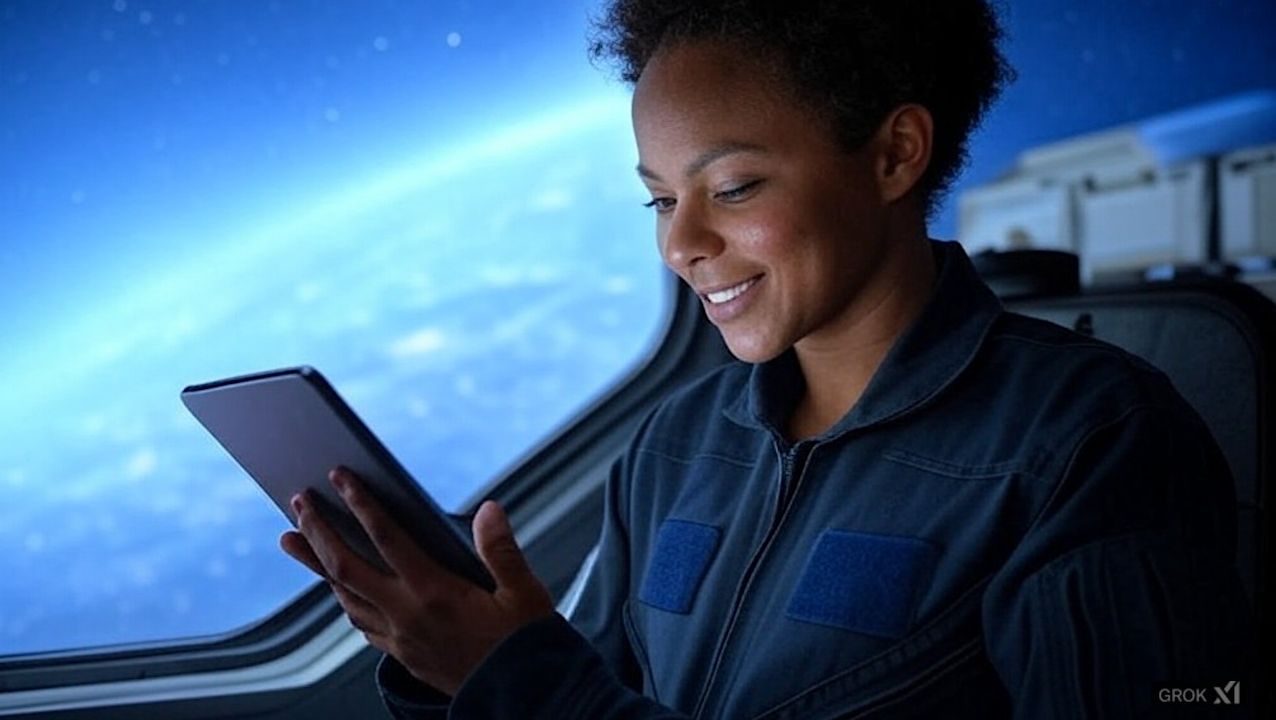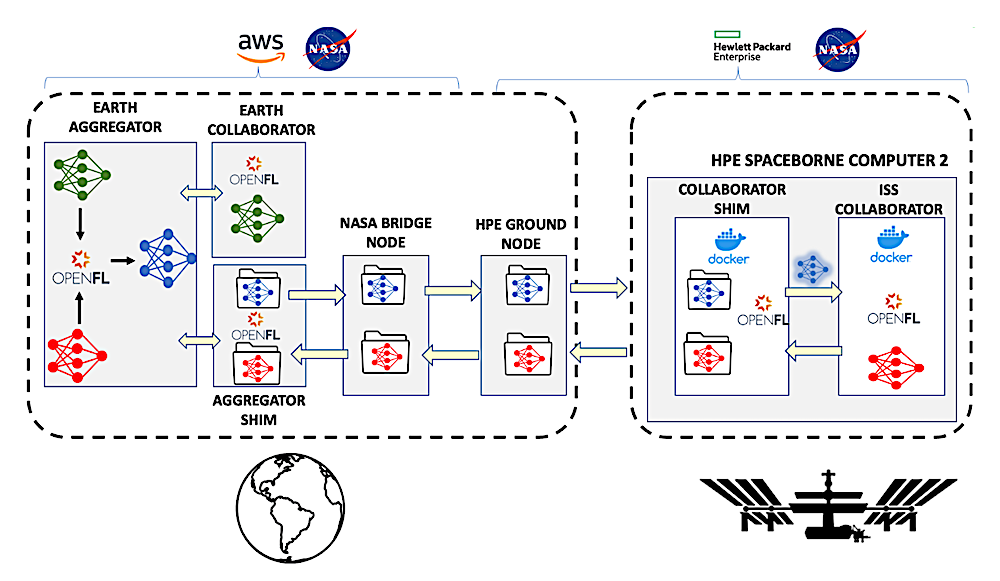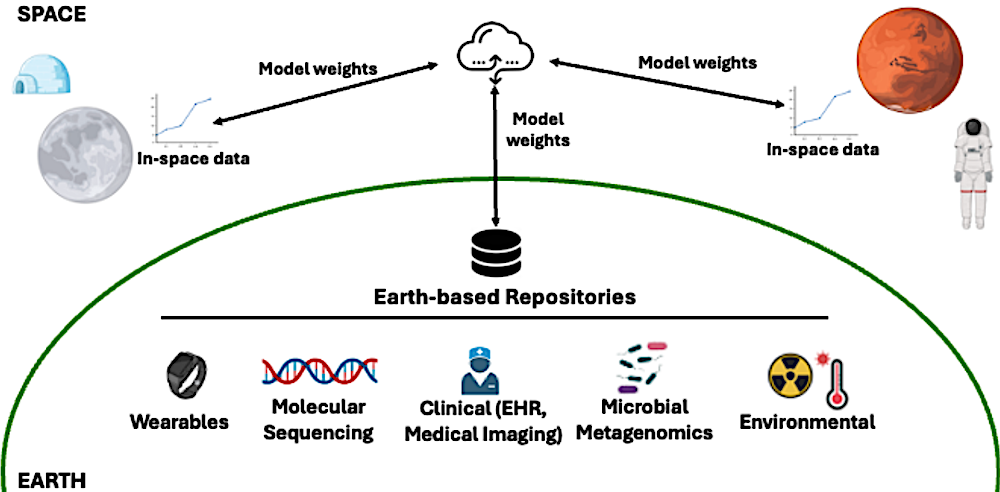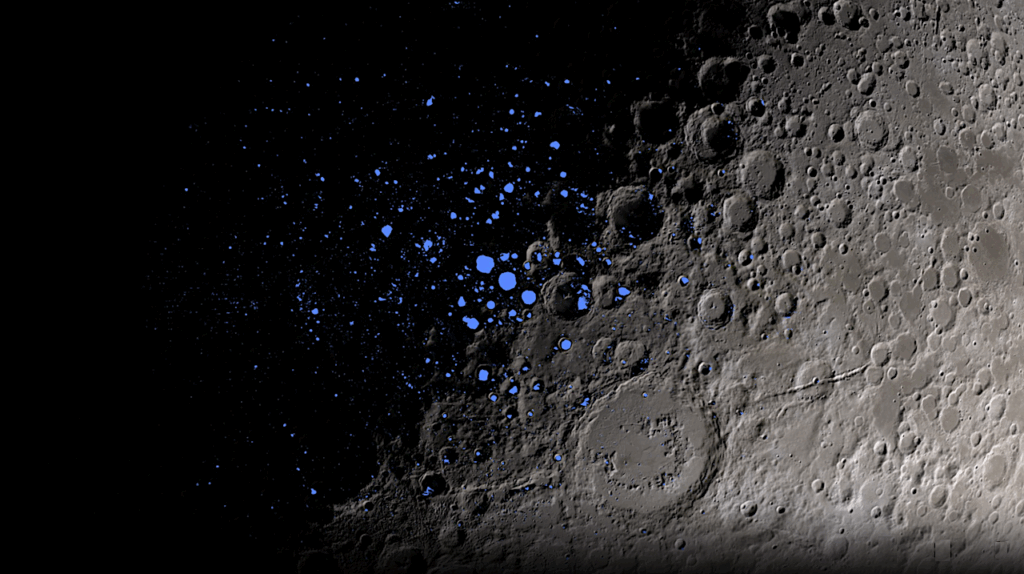Expanding Space Exploration Training Offworld

The public and commercial space industries are planning longer duration and more distant space missions, including the establishment of a habitable lunar base and crewed missions to Mars. To support Earth-independent scientific and medical operations, such missions can leverage artificial intelligence and machine learning models to assist with crew healthcare, spacecraft maintenance, and other critical tasks.
However, transferring large volumes of data between Earth and space for model development consumes valuable bandwidth, is vulnerable to communication disruptions, and may compromise crew safety and data privacy. Federated learning enables model training while keeping data in situ and only transferring model parameters.
In this work, we present a flexible, resilient federated learning framework that provides the secure transmission of model updates between Earth and the International Space Station. On March 15, 2024, this framework pioneered the deployment of federated learning in a spaceflight setting, training classifier models between Earth and the ISS using both real biomedical research data and synthetically generated data.

Data flow between collaborators and aggregator in ground-to-space federated model training. After each round of training, the Earth and ISS collaborators build a model (shown in green and red, respectively) based on their local data. The Earth collaborator sends its model directly to the Earth aggregator over TCP/IP, while the ISS collaborator sends its model to the collaborator shim which, in turn, writes the model to a file. This file gets transmitted down to the HPE ground node, transferred to the NASA bridge node, and sent to the aggregator shim which reads the model from the file and sends it to the Earth aggregator over a standard TCP/IP connection. Finally, the Earth aggregator combines these two collaborator models to build a global model (shown in blue). The global model is then sent back to the Earth collaborator (via TCP/IP) and ISS collaborator (via the shim nodes) to use in the next round of training. — biorxiv.org
Introduction
The National Aeronautics and Space Administration (NASA) and other space agencies have developed and deployed artificial intelligence and machine learning (AI/ML) for decades. These tools were used for purposes such as planning and scheduling space operations, analyzing satellite images, creating climate models detecting exoplanets6, identifying lunar features, diagnosing anomalies and landing effectively on the surface of Mars in 2020 with the Perseverance Rover.
AI/ML models offer a powerful approach to support the needs of NASA and commercial spaceflight in its upcoming deep space exploration missions, such as Artemis, other portions of the Moon-to-Mars initiative13,14, and SpaceX’s StarShip missions. It is essential for deep space missions to develop capabilities for in situ analysis and greater crew autonomy, as these missions will lack immediate access to the continuous support of mission control staff, scientists, and medical personnel allocated to low Earth orbit (LEO) missions.
To stay current, these models would need to be routinely updated with new data from Earth, ensuring they reflect the most advanced knowledge and insights available. However, large-scale data movement poses significant challenges, as ground-to-space data transmission is less reliable and slower than terrestrial networks. The time and cost associated with transferring large volumes of data can be prohibitive, and the high communication latency in deep space missions further complicates timely updates. The small number of astronauts makes true anonymization challenging and more generally, open scientific research into the effect of spaceflight on the health of public and commercial astronauts is restricted by governmental policies.

FLUID enables space travelers access to Earth-based repositories. Federated learning approaches like FLUID enable light-weight updates to spaceflight predictive models, leveraging the wealth of knowledge in Earth-based repositories while only transferring model weights instead of raw data. — biorxiv.org
Federated learning is one solution to enable the training of machine learning models using Earth-based and space-based data without having to transfer data at all. This approach has seen advancements terrestrially across various clinical research approaches and applications. Federated learning is an approach to building machine learning models when the data used to train, test, and validate them are stored on participating compute nodes in separate locations.
Each participating node is sent a copy of a machine learning model to train on their local data. Once the model has been trained locally over some number of iterations, the nodes send only their updated version of the model parameters to a central coordinating server without sharing their local data. The server uses some form of statistical aggregation (e.g., weighted or unweighted mean, or median) on the contributions from all the nodes and updates the global model.
The updated parameters of the global model are shared again with all the nodes, and the process repeats until the global model converges. Since its inception, federated learning has emerged as a promising approach in machine learning when the training data are distributed and too large to consolidate or private and too sensitive to release for external use.
Bridging Earth and Space: A Flexible and Resilient Federated Learning Framework Deployed on the International Space Station, biorxiv.org (open access)
Astrobiology, Education, Starfleet Academy,








